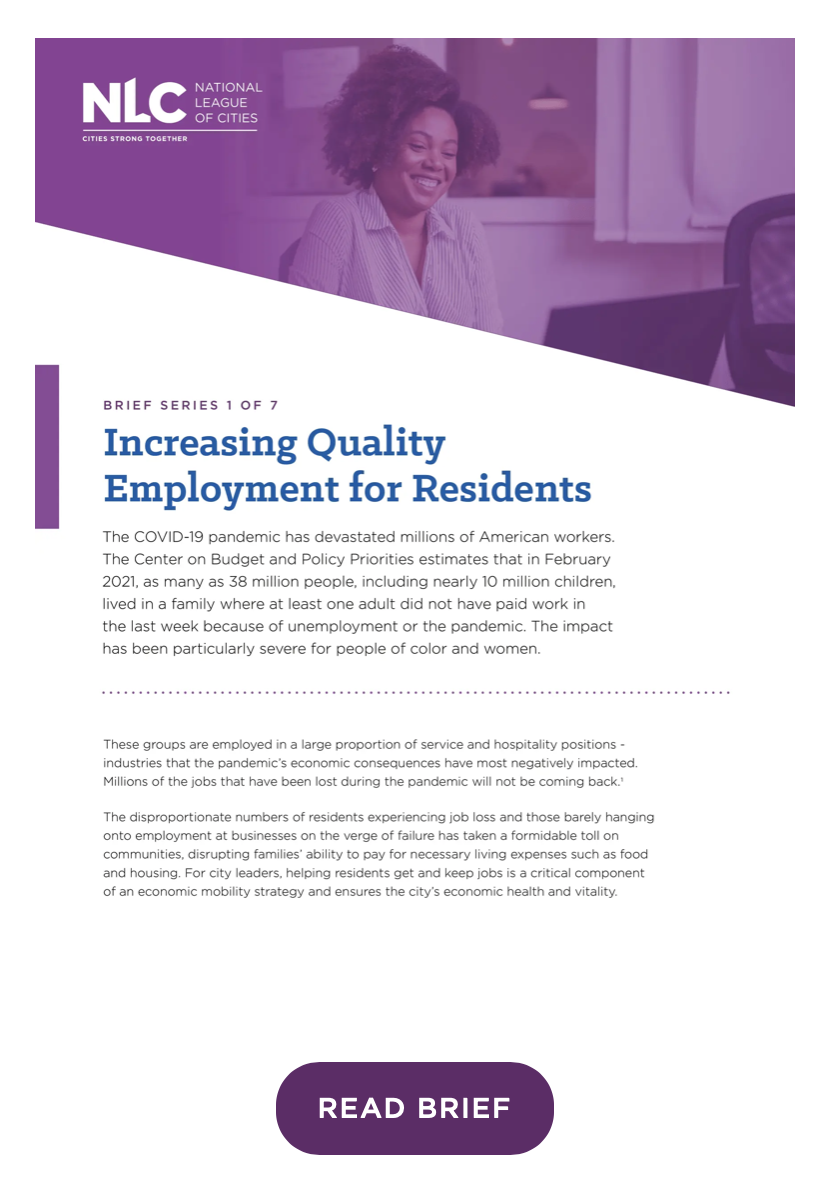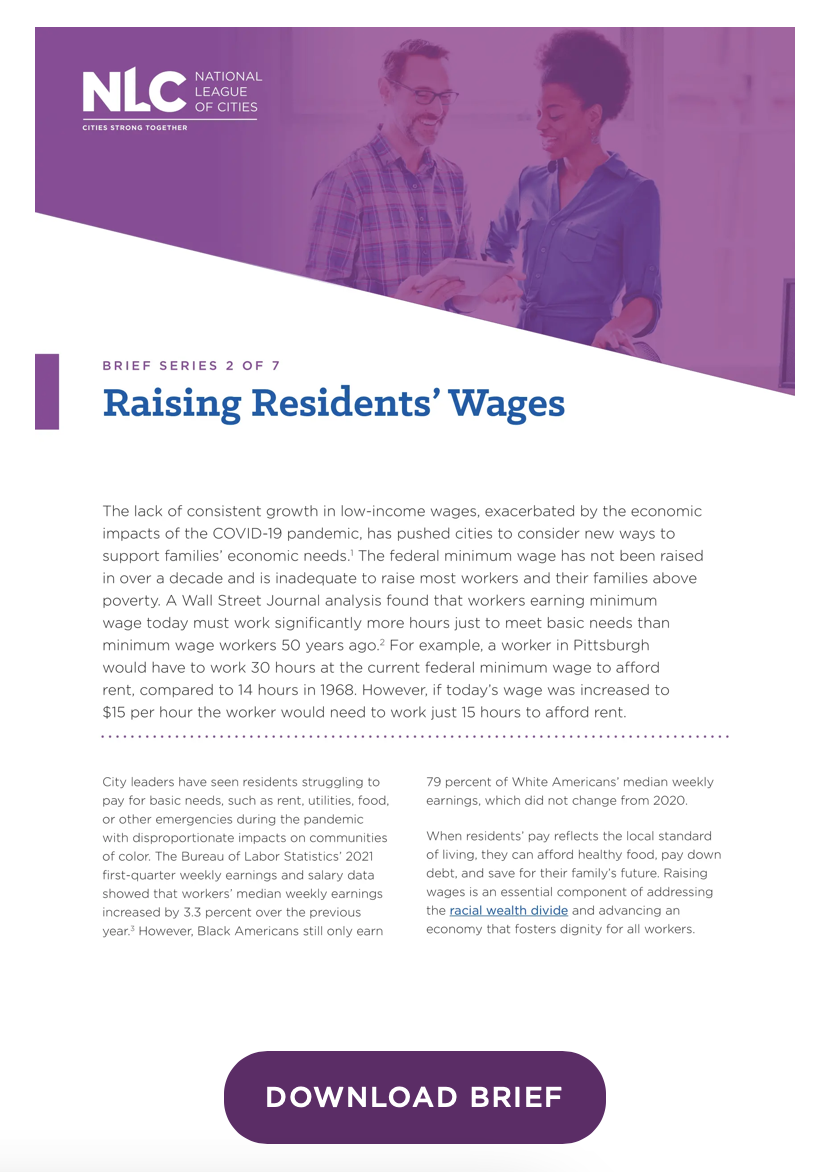The pandemic has wreaked financial havoc for residents and businesses alike in cities across the country. Despite an influx of federal funds to boost economic recovery at the local level, many businesses are still at risk of closing. While employment rates have increased in recent months, many residents have lost jobs that will not likely come back, especially in low-wage industries.
Funding from the American Rescue Plan Act (ARPA) can help cities support local businesses to stay afloat and hire and retain employees. Combined with policies that ensure workers receive family-sustaining wages, these programs can potentially put millions of Americans back on a path toward economic mobility. NLC is ready to support city leaders who may need guidance to make high-impact investments and work with local businesses to act.

Two new resource briefs, Raising Resident Wages and Increasing Quality Employment for Residents, emerging from NLC’s Equitable Economic Mobility Initiative (EEMI) highlight strategies city leaders can take to connect residents to jobs and promote living wages. The first two briefs in a seven-part series outline approach that city leaders can take to expand economic mobility for residents. City leaders can take steps now to keep their residents and local economies afloat with the goal of long-term of stability and expansion.
Improving Employment Resilience
New federal programs are available for local businesses at risk of closing or considering terminating employees to stay afloat. Cities can engage with employers to think differently about how to retain workers during economic downturns with workshare programs or help them skill up through earn and learn opportunities or apprenticeships. Cities can also promote long-term quality employment resilience through strengthening relationships with local community colleges and businesses to create active pipelines to employment that respond to demand over time.
Raising Residents’ Wages
Many residents who were fortunate to keep their jobs or obtained new jobs during the pandemic continue to reel from the economic consequences of wage stagnation, the public health pandemic or even the loss of a loved one. These workers, particularly those who are Black, Indigenous, or People of Color (BIPOC), struggle to make ends meet despite often working full-time jobs.
Raising wages is an essential component of advancing economic mobility for residents to ensure that work pays the bills. Living wages that reflect typical regional costs of basic needs are also a crucial element of addressing the racial wealth divide. City leaders can promote wage increases for residents by increasing the local minimum wage or passing living wage ordinances that raise the wages of city employees or require city contractors to pay their employees a living wage. Local employers who pay a living wage and offer essential benefits can be recognized by the city for investing in residents.
These and other economic mobility strategies are part of the broader NLC Equitable Economic Mobility Initiative (EEMI). Launched in July 2021, the EEMI includes a cohort of eight cities that are taking steps to improve economic mobility and racial equity in their communities through data-driven strategies.
Join the Economic Mobility Peer Network
Stay tuned for updates from the EEMI cohort on data-driven strategies and real-time examples of expanding economic mobility!










